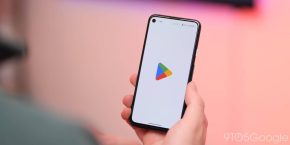
Google has updated its Play Services to allow developers to make use of some very useful new enhancements to the overall experience of using Android. Google Play Services 8.3 includes updates to the way users sign in to apps, as well as new functionality for app invites, wearable data layer APIs and improvements to location services…
Perhaps the biggest part of the update is a change to the way users will be able to sign in to apps using their Google sign-in. With Play Services 8.3, customers will only have to press ‘Sign in with Google’, and they’re signed in. There won’t be any further screens asking for permissions to access your G+ profile, or requests to sign up to Google’s social network. Once you press ‘Sign in with Google’, it automatically grants access to very basic profile info, and signs you in. One tap. Done.
Signing in across devices is being made easier in general too, whether you use the Google sign-in or have a password-based authentication. Now when signing in, or signing up to services/apps, Android will show a simpler dialog with previously-used email addresses to choose from. It doesn’t require any specific permissions either. All the important changes are detailed in the video below:
[youtube=https://www.youtube.com/watch?v=nAUeEJ51Cko]
Location determining is being improved in Play Services 8.3 too. Improvements are being made to the way Android handles location data provided by GPS, Wi-Fi and the cell radio signal:
For determining location, Google Play services provides a Fused Location Provider (FLP) which abstracts the underlying location sensors, such as GPS, WiFi, and the cell radio signal, into a single easy-to-use API. We’ve made some improvements to the FLP when it comes to batching. Prior to version 8.3, the batch location APIs would allow the FLP to save power by consolidating network traffic, but when an app removed a batching location request, the batch would be cleared. You may not want this behavior, so we’ve added an API that can return any batched locations immediately.
In the update, developers are also being given a new way to enable users to invite friends to download an app, which doesn’t require a long or complicated string of code. Sticking on the app theme, Google has also developed a way for developers to tell when an app user is likely to ‘churn’. Using it, the app can detect when a player is likely to stop playing (or using the app) and use it to trigger an in-app promotion.
Lastly, to provide wearable users with a great experience, i.e. good battery life and efficient power consumption, Google has developed tools to help better sync data between Android apps and wearables. Using the tool, developers can mark which data is ‘urgent’ and sync it immediately, or leave it as non-urgent, in which case it syncs within 30mins. The idea is to ensure that data communication between the two devices is kept to a minimum, without missing anything important.
FTC: We use income earning auto affiliate links. More.





Comments